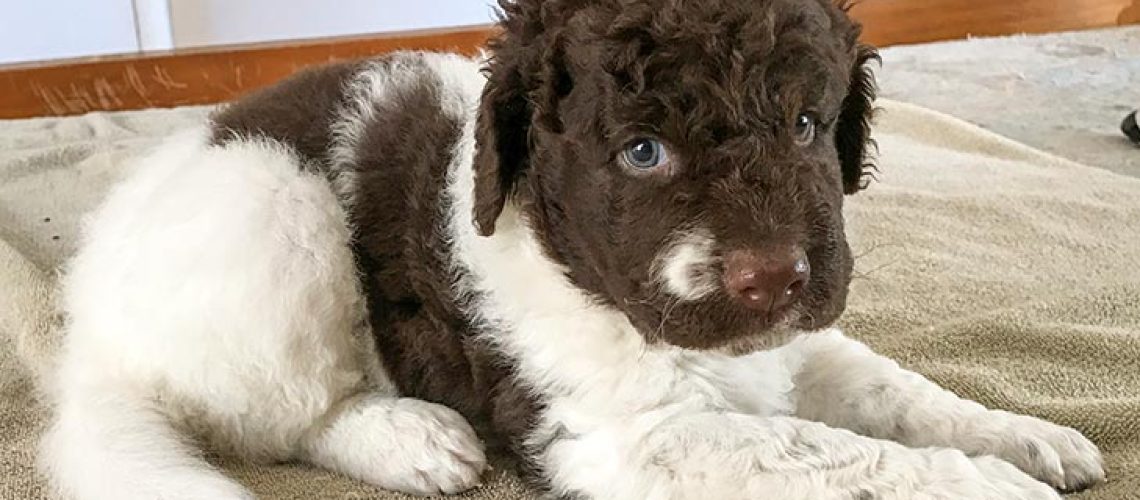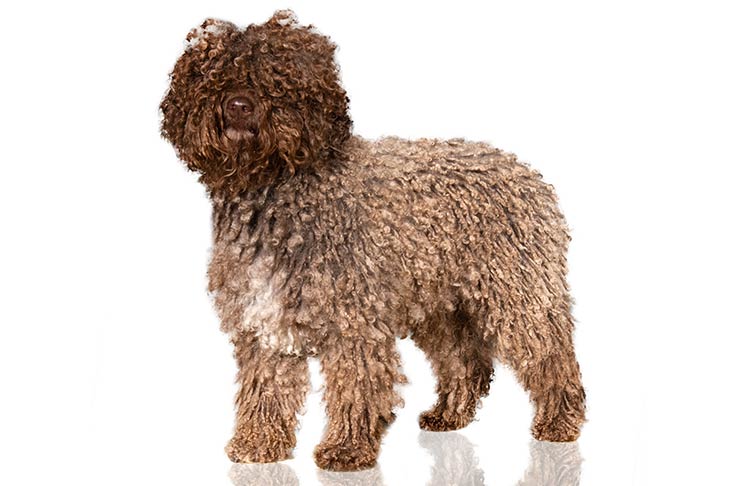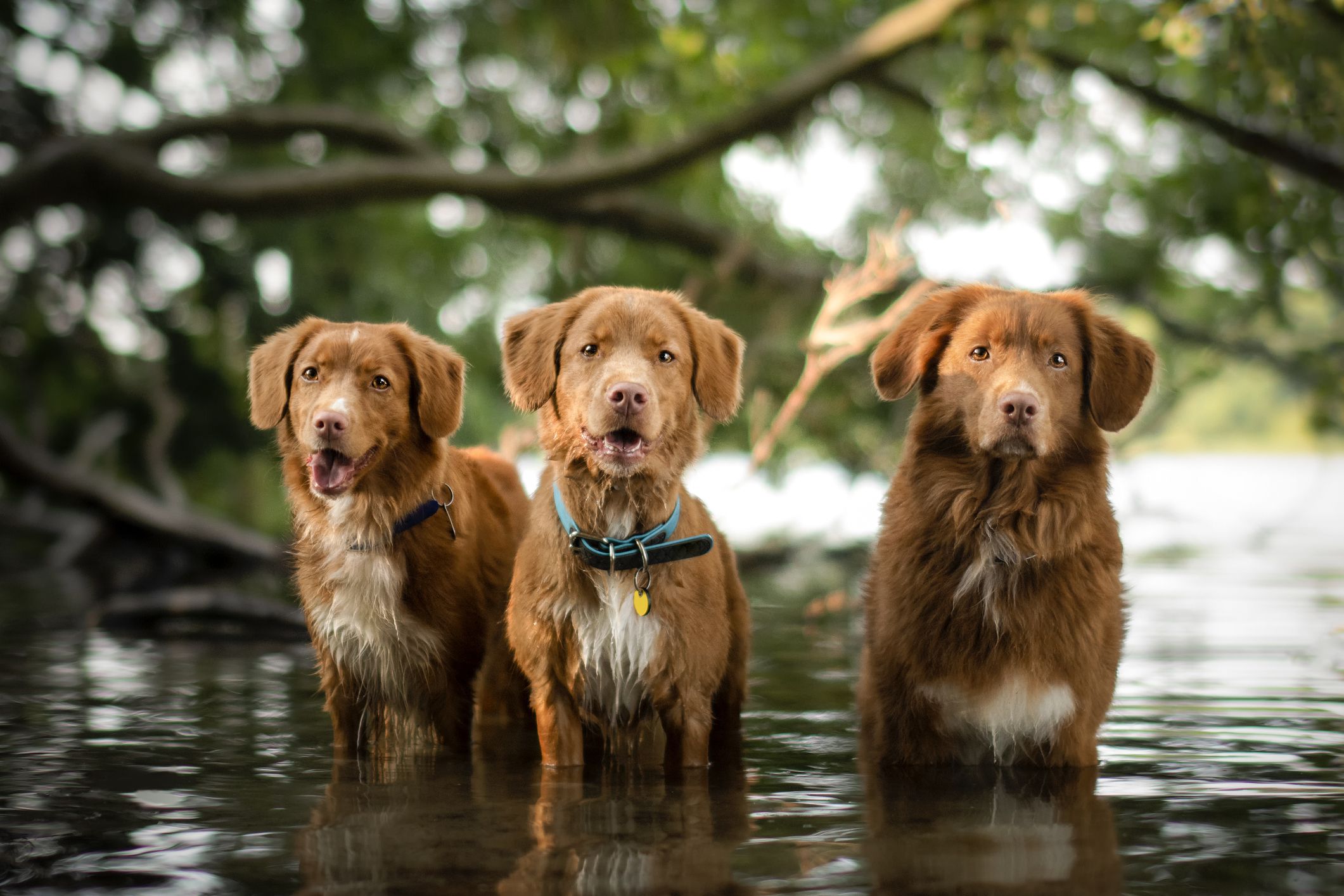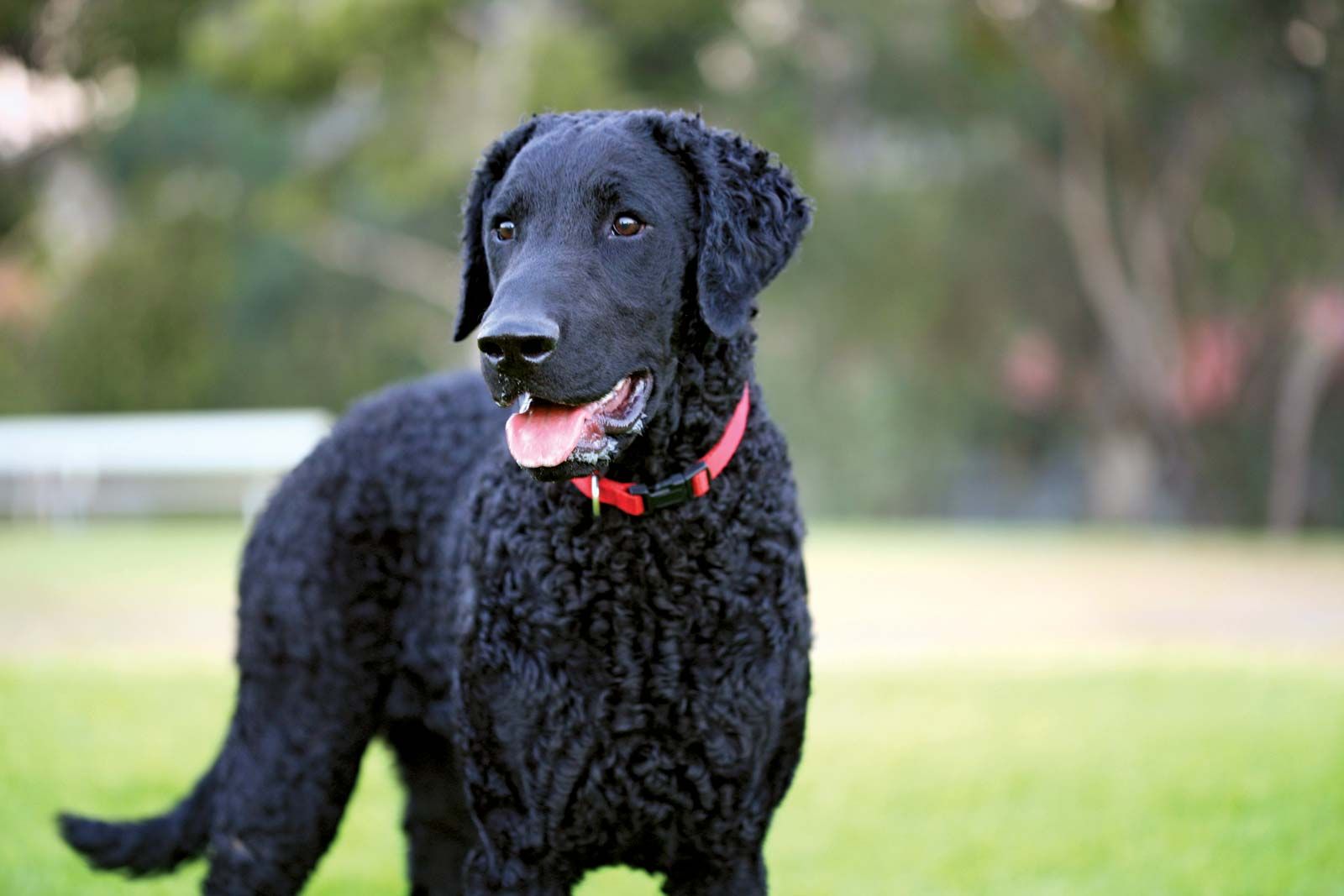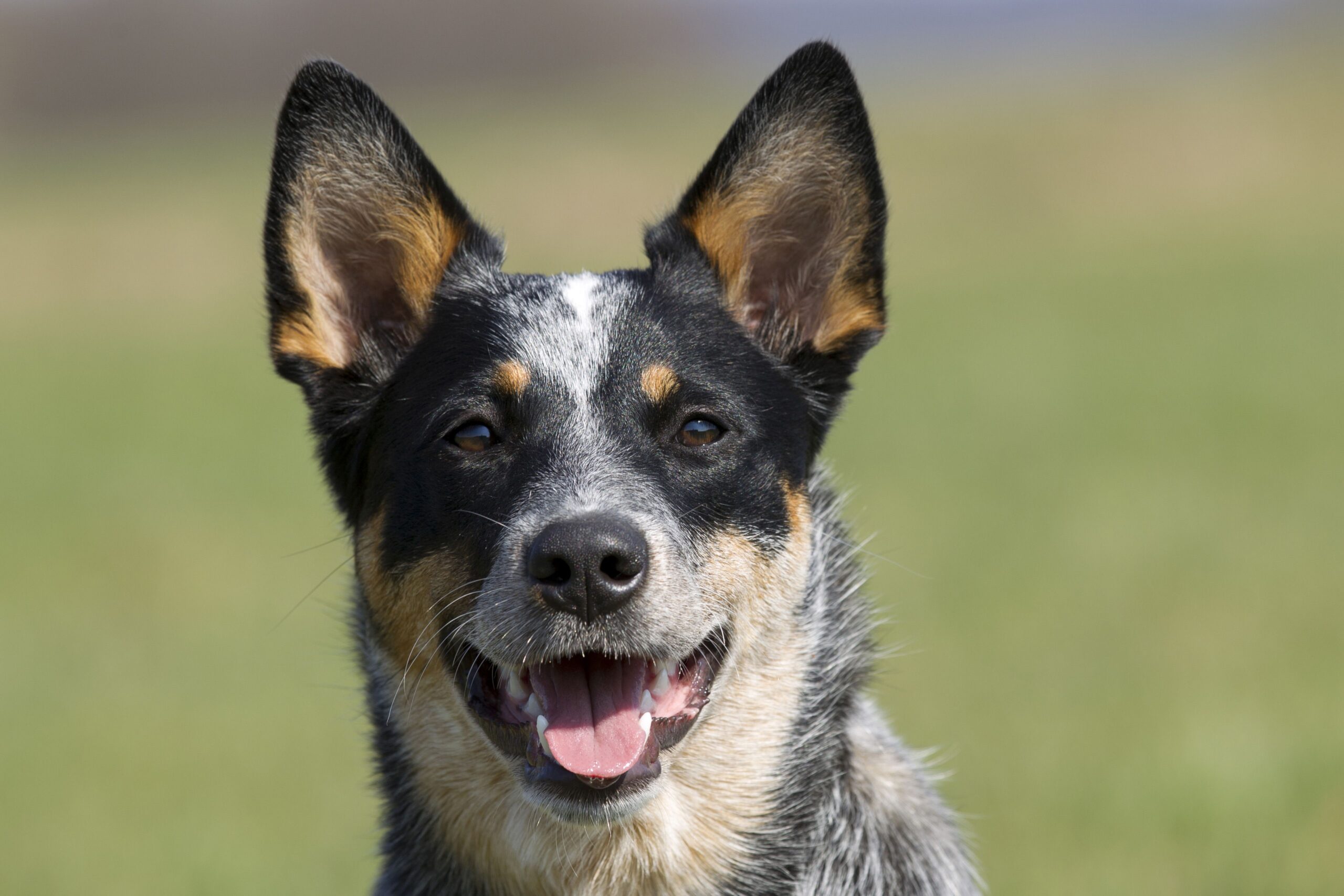Key Takeaways:
- Wetterhouns are a rare and ancient breed of water dog originating from the Netherlands.
- They are known for their strong swimming abilities and webbed feet, making them excellent hunting and retrieving dogs.
- Wetterhouns have a dense, curly coat that requires regular grooming to prevent matting and keep it healthy.
- These dogs are highly intelligent, trainable, and eager to please their owners, making them suitable for various activities such as obedience training or agility competitions.
- Proper socialization is essential for Wetterhouns, as they can be reserved with strangers but are usually loyal and affectionate towards their families.
Are you a dog lover? Do you enjoy learning about different dog breeds and their unique characteristics? If so, then you're in for a treat! In this article, we will explore the fascinating world of Wetterhoun dogs - a breed known for its intelligence, loyalty, and versatility. Understanding the ins and outs of this remarkable breed can not only enhance your knowledge of dogs but also provide valuable insights into responsible pet ownership. So, get ready to dive into the wonderful world of Wetterhouns and discover why they are truly one-of-a-kind companions.
What is a Wetterhoun? Unique characteristics of this water dog
The Wetterhoun is a unique breed of water dog that originated in the Netherlands. It is known for its distinctive appearance and excellent swimming abilities. The Wetterhoun has a sturdy and muscular build, with a thick double coat that helps protect it from cold water temperatures. This breed also has webbed feet, which make it an excellent swimmer.
In addition to its physical characteristics, the Wetterhoun is also known for its intelligence and loyalty. It is a highly trainable dog that excels in various tasks such as hunting, retrieving, and even search and rescue work. The Wetterhoun's strong work ethic and willingness to please its owner make it an ideal companion for those who enjoy outdoor activities.
Distinctive Characteristics:
- Sturdy and muscular build
- Thick double coat
- Webbed feet for swimming
- Intelligent and loyal
- Excellent working abilities
The History of the Wetterhoun:
The Wetterhoun has a long history dating back several centuries. It was originally bred in the Friesland region of the Netherlands to be a versatile working dog primarily used for hunting otters and other small game in wetlands. The name "Wetterhoun" translates to "water dog" in English, highlighting its role as a skilled swimmer.
Over time, the Wetterhoun's capabilities expanded beyond hunting to include tasks such as guarding farms, pulling carts, and even herding livestock. Its adaptability and versatility made it highly valued by farmers and hunters alike. Today, while still relatively rare outside of its native country, the Wetterhoun is gaining recognition for its unique qualities and is cherished by dog enthusiasts around the world.
How the Wetterhoun's coat helps it in its job as a water dog
The Wetterhoun's thick double coat plays a crucial role in its ability to perform as a water dog. The outer coat consists of coarse and oily hair, which helps repel water and keep the dog dry even in wet conditions. This protective layer prevents the Wetterhoun from becoming waterlogged and helps maintain its body temperature when swimming in cold waters.
Beneath the outer coat lies a dense undercoat that provides insulation, further enhancing the Wetterhoun's ability to withstand chilly temperatures. This double coat not only protects the dog from moisture but also acts as a natural barrier against thorny vegetation and rough terrain, allowing it to navigate through challenging environments with ease.
The Benefits of a Double Coat:
- Repels water, keeping the dog dry
- Provides insulation against cold temperatures
- Acts as a natural barrier against rough terrain
- Offers protection from thorny vegetation
Maintaining the Coat:
To ensure that the Wetterhoun's double coat remains in optimal condition, regular grooming is essential. Brushing at least once or twice a week helps remove loose hairs, prevents matting, and distributes natural oils throughout the coat. Trimming excess hair around the paws and ears can also help maintain cleanliness and prevent infections.
In addition to brushing, occasional bathing is necessary to keep the coat clean and odor-free. However, excessive bathing should be avoided as it can strip away essential oils and lead to dry skin. It's important to use a dog-specific shampoo that is gentle on the Wetterhoun's sensitive skin and coat.
Exercise needs for a healthy and happy Wetterhoun
The Wetterhoun is an active and energetic breed that requires regular exercise to stay healthy and happy. They have a strong instinct to work, so engaging them in activities that stimulate their mind and body is essential. Daily walks or jogs are important to keep them physically fit, but it's also crucial to provide mental stimulation through interactive games and training sessions.
In addition to regular exercise, the Wetterhoun thrives in an environment where they can engage in activities that tap into their natural abilities. This includes participating in water sports such as swimming or retrieving objects from the water. Their webbed feet make them excellent swimmers, and they thoroughly enjoy being in the water.
It's important to note that the Wetterhoun should not be left alone for extended periods as they thrive on human companionship. Engaging them in activities that involve interaction with their owners, such as obedience training or agility courses, can help fulfill their need for mental stimulation while strengthening the bond between dog and owner.
Are Wetterhouns good with children and other pets?
Wetterhouns are known for their gentle nature and are generally good with children and other pets when properly socialized from a young age. They have a patient temperament, which makes them well-suited for households with children. However, it's crucial to supervise interactions between dogs and young children to ensure both parties are safe.
When introducing a Wetterhoun to other pets, early socialization is key. With proper introductions and gradual acclimation, they can coexist peacefully with other animals in the household. It's important to remember that each dog has its own personality, so individual temperaments may vary.
While Wetterhouns generally get along well with children and other pets, it's always recommended to monitor interactions closely and provide positive reinforcement for appropriate behavior. This will help foster a harmonious environment where everyone can coexist happily.
Common health issues in Wetterhouns and how to prevent/manage them
Wetterhouns are generally a healthy breed, but like any dog, they can be prone to certain health issues. One common health concern in Wetterhouns is hip dysplasia, a condition where the hip joints do not develop properly. Regular exercise and maintaining a healthy weight can help reduce the risk of hip dysplasia. Additionally, breeding dogs should undergo hip evaluations to ensure they are free from this condition.
Another health issue that may affect Wetterhouns is progressive retinal atrophy (PRA), which causes gradual vision loss and can eventually lead to blindness. Regular eye examinations by a veterinarian can help detect PRA early on, allowing for proper management and potential treatment options.
To maintain overall good health, it's important to provide regular veterinary care, including vaccinations and preventive measures against parasites such as fleas and ticks. A balanced diet tailored to their specific needs is also crucial for optimal health.
By being proactive in monitoring their health and providing appropriate care, many potential health issues in Wetterhouns can be prevented or managed effectively, ensuring they live long and happy lives.
Grooming tips for keeping a Wetterhoun's coat clean and mat-free
The Wetterhoun has a dense double coat that requires regular grooming to keep it clean and mat-free. To maintain their coat's quality, it's recommended to brush them at least twice a week using a slicker brush or comb with wide teeth. This helps remove loose hair and prevents tangles or mats from forming.
Regular bathing is also important for keeping their coat clean. However, excessive bathing should be avoided as it can strip the natural oils from their skin and cause dryness. It's best to use a mild dog shampoo and rinse thoroughly to ensure no residue is left behind.
Trimming their nails regularly is essential to prevent overgrowth, which can be uncomfortable for the dog and may lead to issues with walking. Additionally, regular dental care, such as brushing their teeth or providing dental chews, helps maintain good oral hygiene and prevents dental problems.
Lastly, it's important to check their ears regularly for any signs of infection or excessive wax buildup. Cleaning their ears with a veterinarian-recommended ear cleaner can help prevent ear issues.
By following these grooming tips and establishing a regular grooming routine, you can keep your Wetterhoun's coat clean, healthy, and free from mats or tangles.
Training tips for a Wetterhoun puppy: housebreaking and basic commands
Training a Wetterhoun puppy requires consistency, patience, and positive reinforcement. Housebreaking is one of the first training tasks you'll need to tackle. Establishing a routine by taking them outside at regular intervals after meals or naps helps them understand where they should eliminate. Rewarding them with praise or treats when they go in the designated area reinforces the desired behavior.
Basic commands such as "sit," "stay," and "come" are essential for every dog's obedience. Using positive reinforcement techniques like treats or verbal praise when they successfully perform these commands encourages them to continue learning. Short training sessions multiple times a day are more effective than long sessions that may cause puppies to lose focus.
Socialization is also crucial during the early stages of training. Exposing your Wetterhoun puppy to various environments, people, and other animals helps them develop into well-rounded adults. Puppy classes or playdates with other friendly dogs provide opportunities for socialization while reinforcing positive behaviors.
Consistency in training methods and expectations is key. Using clear cues and rewarding desired behaviors while redirecting unwanted behaviors helps establish boundaries and reinforces good habits. Avoid using punishment-based training methods as they can lead to fear or aggression.
Remember, training is an ongoing process that requires patience and understanding. With consistent training and positive reinforcement, your Wetterhoun puppy will grow into a well-behaved and obedient companion.
In conclusion, the Wetterhoun is a unique and intelligent dog breed that is well-suited for families. With proper care, training, and exercise, they can make loyal and loving companions.
Do Wetterhoun dogs shed?
Taking care of a Wetterhoun breed involves minimal coat maintenance, as their fur does not easily tangle and only sheds moderately. Brushing their fur once or twice a week is sufficient. However, it is important to regularly check and clean their ears to prevent any infections.
Why are Wetterhouns so rare?
Due to Germany's occupation of their home country during World War II, the breed was nearly extinct. However, in the 1950s, focused breeding efforts successfully revived the Wetterhoun, although their population remains small with only around 1,000 individuals worldwide, mostly found in their native country.
What does a Wetterhoun dog look like?
The dog's fur is thick and curly all over except for the head, ears, and legs, where it is smoother. The coat is water repellent and has an oily texture. The color of the coat can be solid black or brown, black and white, or brown and white. It may also have ticking or roaning patterns.
How bad do sheepdogs shed?
These dogs require a lot of grooming and tend to drool. They shed a significant amount and bring in dirt with their thick fur. They are not suitable for someone who wants to keep their home perfectly clean.
What Russian dog doesn't shed?
The Russian Tsvetnaya Bolonka is a breed that is highly sought after by allergy sufferers because it is hypoallergenic. It is important to regularly brush their coat, especially if it is not cut, using a wide-tooth comb to keep it in good condition. However, if their hair is trimmed, they may require less brushing.
What is the most expensive dog as a puppy?
The Tibetan Mastiff is a breed known for its large size, but they are actually very calm and loving. They are also one of the most expensive breeds available, ranging in price from $3,000 to $10,000 or even higher. The most expensive dog ever sold was a red Tibetan Mastiff named Big Splash, which sold for approximately $1.5 million!



